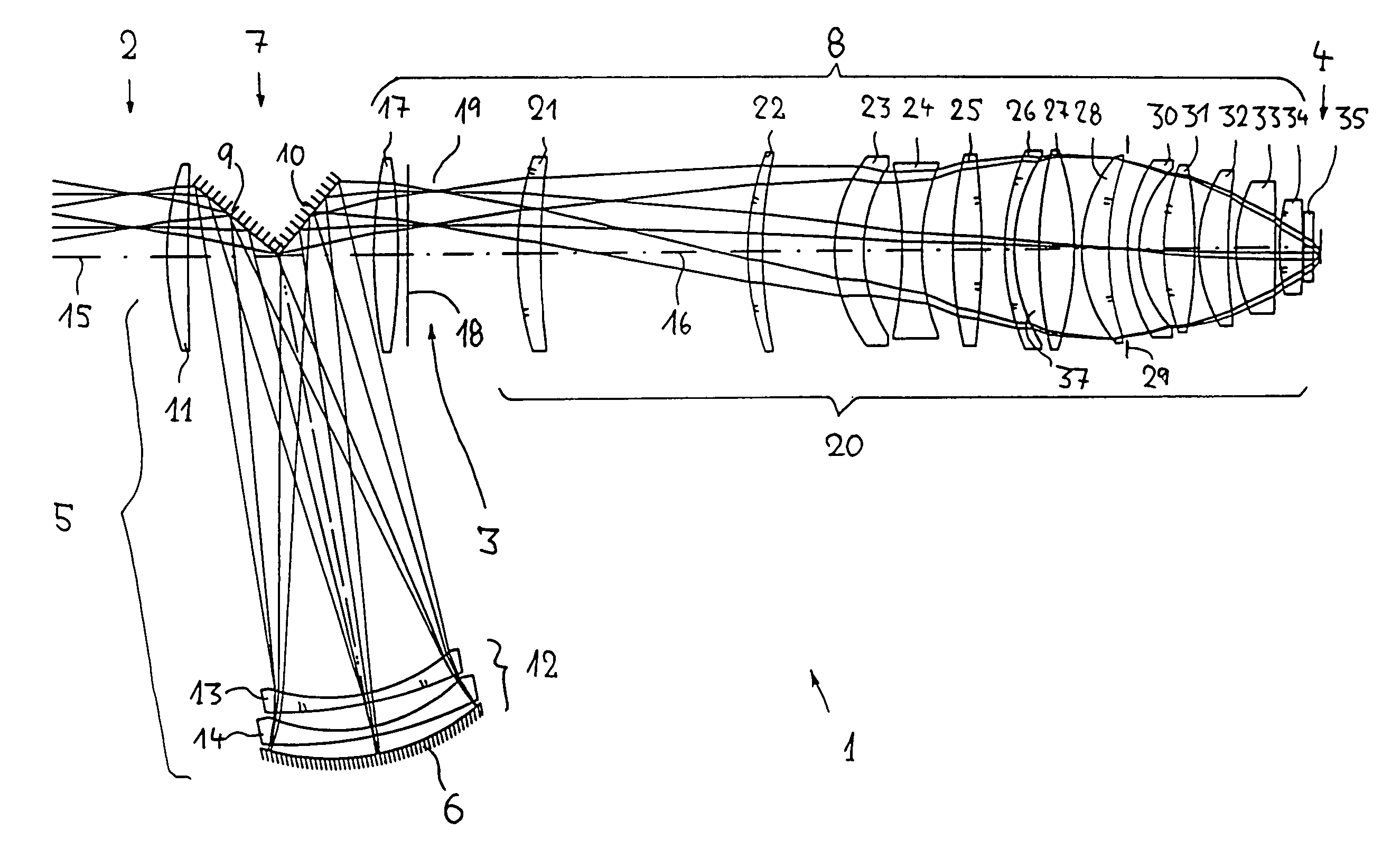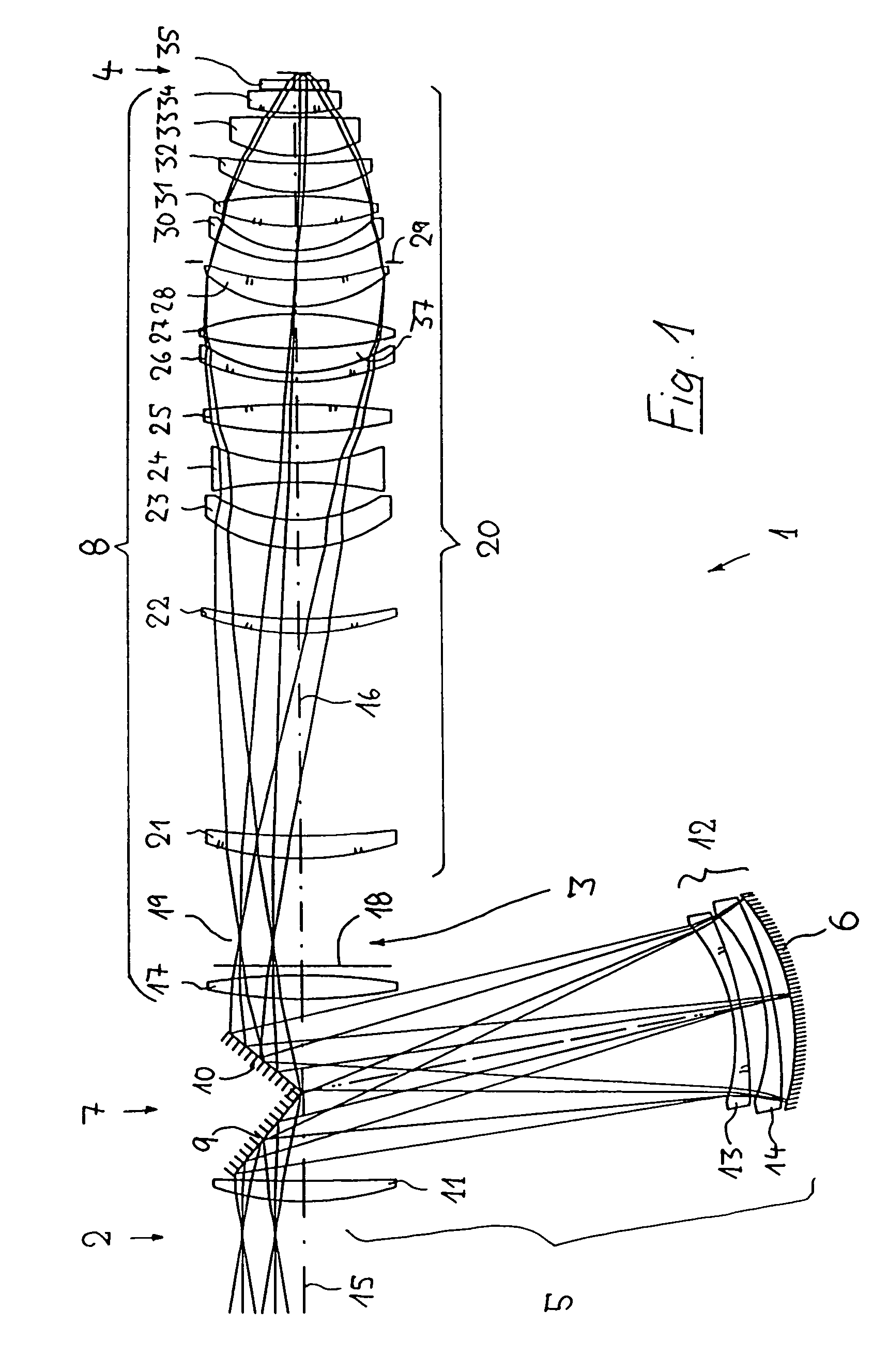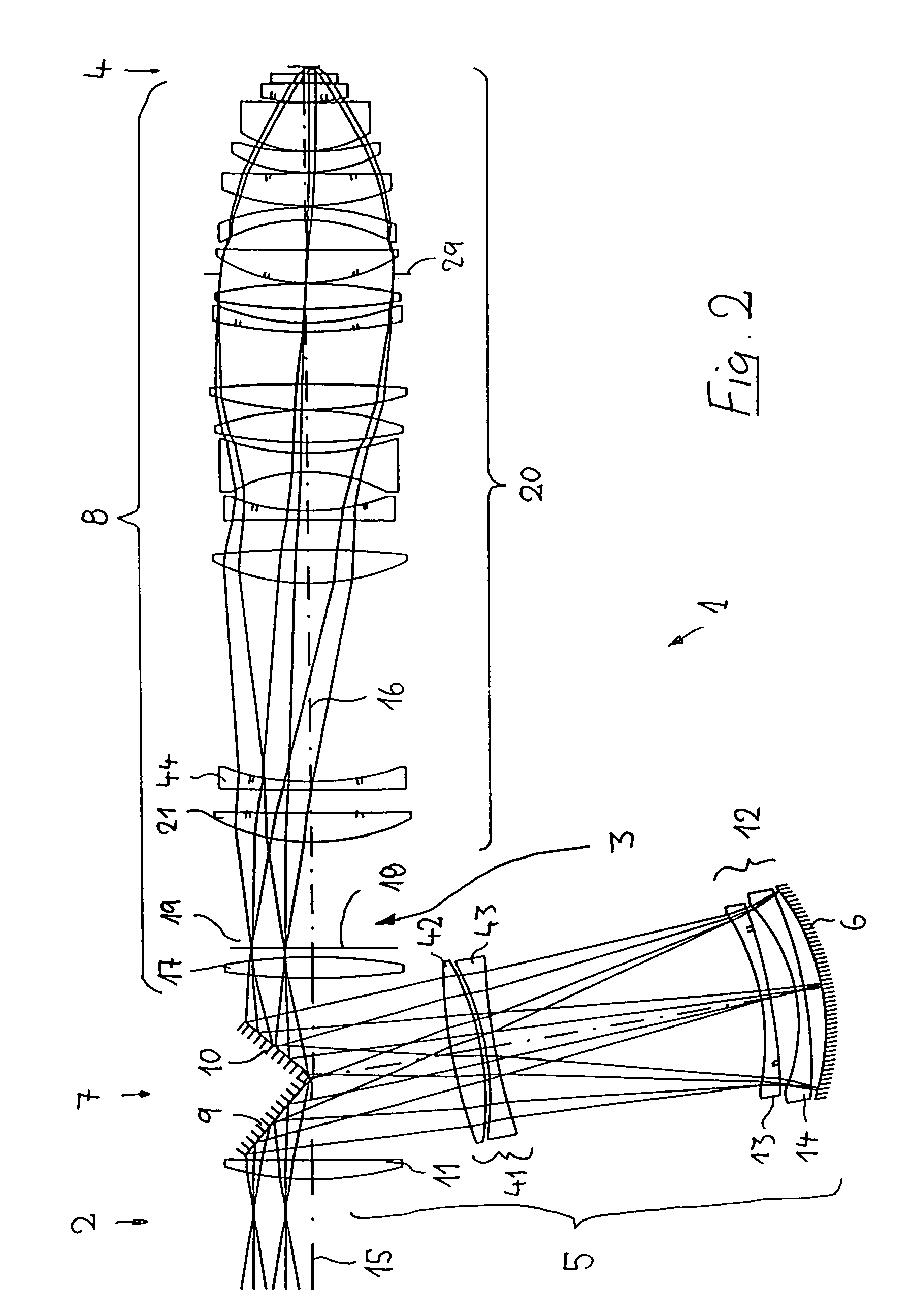Catadioptric reduction lens
a reduction lens and catadioptric technology, applied in the field of catadioptric projection lenses, can solve the problems of large volume, difficult to provide purely refractive systems that have been sufficiently well corrected for chromatic aberration, and difficult to fabricate such mirror systems. , to achieve the effect of reducing the quantity of materials required
- Summary
- Abstract
- Description
- Claims
- Application Information
AI Technical Summary
Benefits of technology
Problems solved by technology
Method used
Image
Examples
Embodiment Construction
[0043]In the following description of preferred embodiments of the invention, the term “optical axis” refers to a straight line or a sequence of straight-line segments passing through the centers of curvature of the optical elements involved, where said optical axis will be folded at the reflective surfaces of deflecting mirrors or other reflective optical elements. Directions and distances shall be designated as “image-side” directions or distances if they are directed toward either the image plane involved or a substrate to be illuminated that is present in said plane and as “object-side” directions or distances if they are directed along that segment of said optical axis extending toward the object involved. In the case of those examples presented here, said object may be either a mask (reticle) bearing the pattern of an integrated circuit or some other pattern, such as a grating. In the case of those examples presented here, the image of said object is projected onto a wafer coa...
PUM
| Property | Measurement | Unit |
|---|---|---|
| wavelength range | aaaaa | aaaaa |
| wavelength range | aaaaa | aaaaa |
| wavelengths | aaaaa | aaaaa |
Abstract
Description
Claims
Application Information
 Login to View More
Login to View More - R&D
- Intellectual Property
- Life Sciences
- Materials
- Tech Scout
- Unparalleled Data Quality
- Higher Quality Content
- 60% Fewer Hallucinations
Browse by: Latest US Patents, China's latest patents, Technical Efficacy Thesaurus, Application Domain, Technology Topic, Popular Technical Reports.
© 2025 PatSnap. All rights reserved.Legal|Privacy policy|Modern Slavery Act Transparency Statement|Sitemap|About US| Contact US: help@patsnap.com



